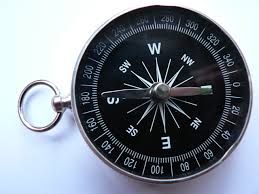How Did I Get Here, And Where Am I Going?
When I talk to business owners, I often ask them how they got into their business. More times than not, they tell me they ended up in their industry almost by accident. It wasn’t because they spent time trying to find their ideal market or they knew there would be great growth opportunity … it was that they had a talent or ability – and a customer. For years, they would work tirelessly to make the business into what they “thought” they wanted. And then one day they wake up and realize this isn’t the business they want – or maybe it was, but not anymore.
There are a lot of business people who find themselves in this position. It might take a year, five years, or even 10 years, but at some point every business owner needs to take a step back and ask some fundamental questions:
- If I keep doing what I’ve been doing, am I going to enjoy it?
- If I keep doing what I’ve been doing, will I be able to reach my financial goals?
- Have I chased opportunities that have led me away from what I’m passionate about?
- Have I chased opportunities that have created a company that is more complicated than it needs to be or is competing in too many different markets?
- What do we need to do to be more successful? Is there a short list that we can work from?
- What is going on in the marketplace that may make it impossible for me to keep doing what I’ve been doing?
Answering these questions is the basis of Strategic Planning. Strategic Planning is the process that a company goes through to make conscious decisions about what they are good at, who they serve and how they will make money doing that for those people. Once those answers are clear, then the process continues by making decisions about how the company resources (money, management time and attention, etc.) in order to create the type of business that is envisioned.
As you can see, these are some BIG thoughts. It’s hard to have these kind of thoughts and discussions while the worries and troubles of the day are right in our faces; so this kind of strategic planning is usually done in an off-site meeting or retreat.
Maybe it would help if we looked at an example. One of the companies that I worked with early in my business was a newsletter publisher. They published an expensive newsletter to a very niche audience, and they had built it up to the point where there were 3-4 people making a living doing so. But the newsletter was hard to scale, and they were getting feedback from customers that they needed help implementing the ideas that the company was giving them in the newsletter. Further the partners were increasingly at odds with each other. There was no clear reason why, but things that had been fun and collegial weren’t anymore.
The partners talked at length about different options. They could continue with the newsletter and add consulting services; they could create products or workshops that the clients could use to make better use of the information. Through this process, one of the partners realized that he didn’t have any passion or interest in leading a consulting business. He was looking for something more scalable and less people-intensive. The other partner was jazzed about the idea of growing the consulting business and selling much larger engagements than were possible with the newsletter alone. They ended up parting ways, with one partner continuing on with the consulting business, happy with his choice; and the other leaving to start a software business, happy with his choice. The partner who stayed started hiring different people and offering different choices to his customer base, eventually moving the business toward larger and larger engagements and de-emphasizing the newsletter. As a result, he was able to grow the business, stay in a field he is passionate about and reach his financial goals.
These changes never would have come about if the partners had just kept on doing more of what they had done in the past.
If you are thinking that you might need some time away from your business to refresh your vision and renew your focus, now is the time to do it. Fall is a great time to back away and reflect on the changes that your business, clients and competition have gone through this year. Also any changes you make to your focus, or direction can immediately be reflected in the budget that you are preparing for the following year.
The best strategic planning sessions start with introspection – what do we do well and poorly, and where are our best opportunities. A simple SWOT analysis does a good job of this. But then we have to spend some time looking outside our business at what is happening with our customers and competitors. Lastly, we need to pull all of that together into some clear statements of where we need to go and how to get there. This is where an outside facilitator is essential. It’s important to have an independent voice who is not tied emotionally or politically to any one perspective or idea. They can help you to sort through the alternatives and achieve clarity within this morass.
So plan a date, and get yourself an outside facilitator and start re-inventing your business. You will be amazed at how much the clarity and perspective renews your energy and enthusiasm for you and your team.
Photo credit: Walt Stoneburner


